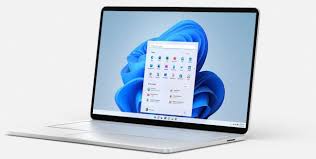
What Is the Cost of Windows 11 for Government and Non-Profit Organizations?
In the fast-changing world of education technology plays a significant role in shaping your learning. With the release of How much is Windows 11 and the introduction of Windows 11, educational institutions have to consider new factors in their budget allocations. This article explores the cost implications of adopting Windows 11 in the context of education aiding institutions to make educated decisions regarding upgrading their systems.
The True Cost of Transitioning to Windows 11
In many schools, the financial commitment involved in upgrading to Windows 11 could be substantial. In addition to the initial purchase of licenses for software, institutions could have to think about upgrading their hardware. Windows 11 has specific system requirements that could require investments in new machines or upgrades to existing ones. Institutions must conduct an in-depth analysis of their current technology infrastructure in order to determine the full costs of implementing the upgrade.
Another factor to think about is the possibility of staff training. Moving to a new operating system typically requires personnel to familiarize themselves with the new features and functions. This may result in additional costs associated with training programs and other resources. However the costs could be mitigated by leveraging online tutorials and resources provided by Microsoft that will help to speed up the learning process for teachers as well as IT personnel.
Balancing Costs with Enhanced Educational Opportunities
Despite the initial costs however, the benefits of Windows 11 for educational institutions are significant. The operating system offers enhanced security options, enhanced performance, and an comfortable user interface. These advantages can result in an efficient and productive learning environment. For instance, the upgraded security features help safeguard sensitive student information from cyber threats, while the user-friendly interface allows teachers to concentrate on teaching, not attempting to solve technical problems.
Furthermore, Windows 11 supports a wide range of educational software and tools which can enhance classroom learning. By leveraging these tools, educators can design engaging lesson plans that cater to various learning styles, thereby improving student outcomes. Therefore, while the initial investment may appear overwhelming, the benefits of enhanced educational opportunities can outweigh the costs.
Strategic Planning for Cost-Effective Implementation
To maximize the benefits of switching to Windows 11, educational institutions should adopt a systematic strategy for deployment. A thorough cost-benefit assessment can help determine the most economical path forward. Some institutions may choose a gradual rollout that starts with a pilot project to examine the impact and to address any challenges before a full-scale deployment.
Furthermore, schools can look into alliances with tech companies and take advantage of discounts for education offered by Microsoft to reduce costs. By working with other stakeholders and prioritizing budget allocations schools can ensure a smooth move into Windows 11 without any compromise to the quality of education.
In conclusion, while the cost of adopting Windows 11 for educational institutions is subject to a variety of considerations but the potential for better education results makes it an investment worth the investment. With careful planning and strategic budgeting, schools can tap the power of Windows 11 to create a dynamic and secure learning environments that will benefit both students and teachers.